Singapore's first panda cub: Milestones over 100 days

SINGAPORE - Nov 21 marks the 100th day since the birth of Singapore's first panda cub on Aug 14 at the River Safari.
The much-anticipated birth of the male cub, yet to be named, came after the giant pandas' seventh breeding season. Father Kai Kai, 13, and mother Jia Jia, 12, began mating as far back as 2015. It is rare for giant pandas to breed in captivity, in part due to the narrow window for conception.
Here is a photo album of the milestones of baby panda's first 100 days, from his first tooth to the inaugural weigh-in.
Day 4, Aug 17: Four days after the baby arrives on Aug 14 at 7.50am, giant panda mum Jia Jia cradles her cub as he suckles contentedly.
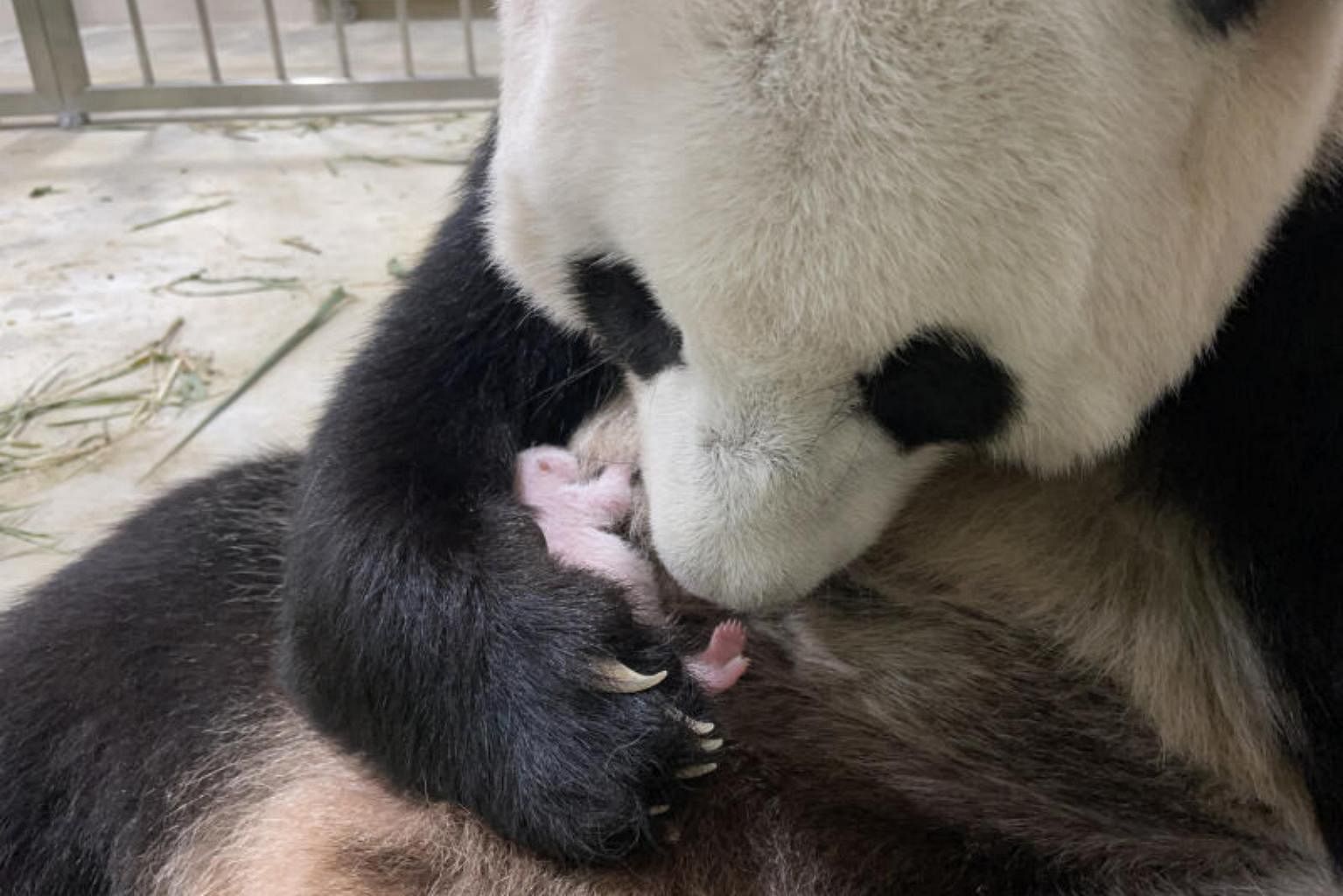
Day 10, Aug 23: The cub lies quietly during rest time. On the 10th day, based on data provided by Chinese experts on the growth curve of cubs as baby cannot be separated from mum, the baby likely weighs an estimated 380g.
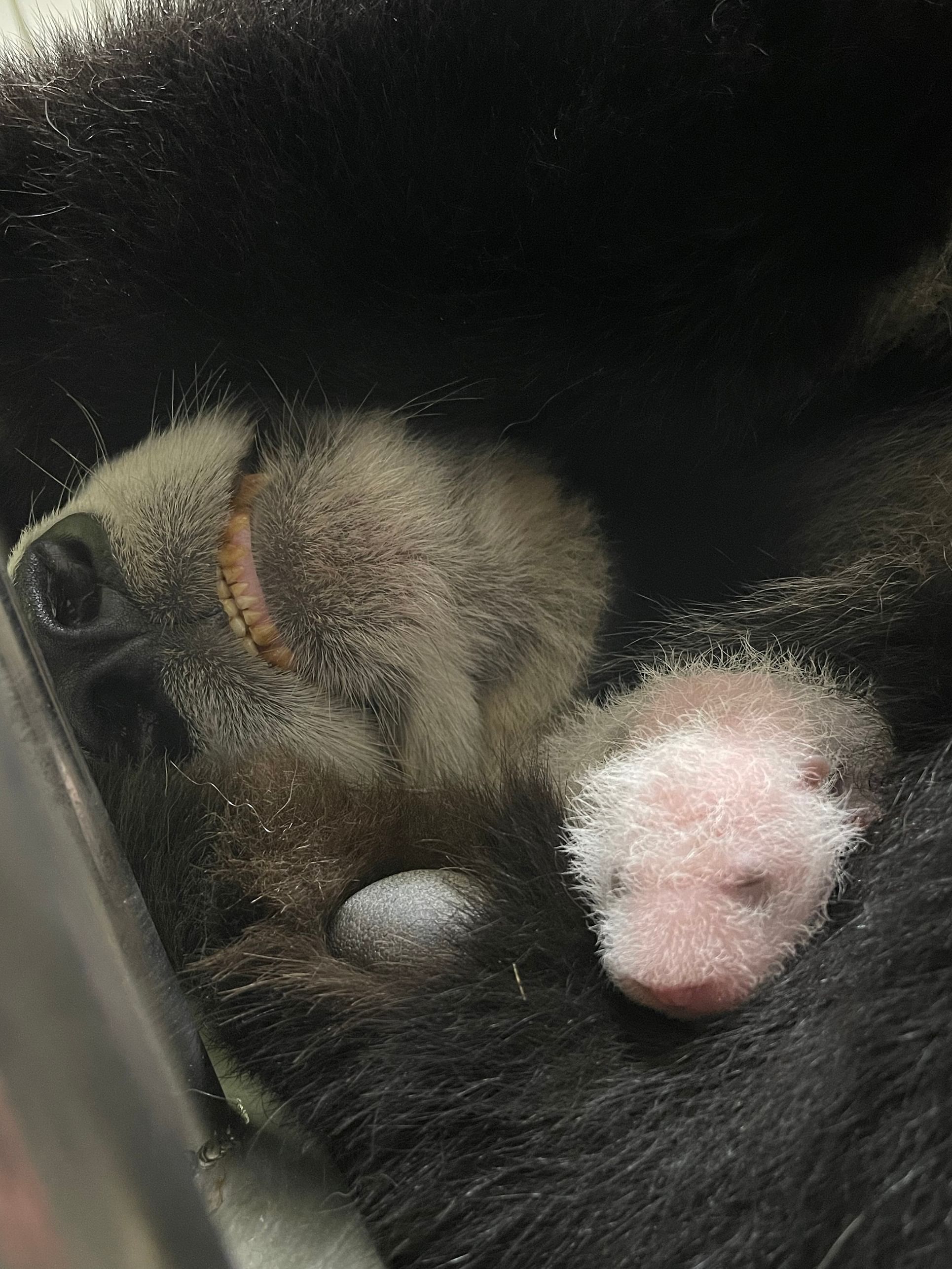
Day 21, Sept 3: The cub's fat belly is evident — a sign that he is suckling well and mum has plenty of milk.
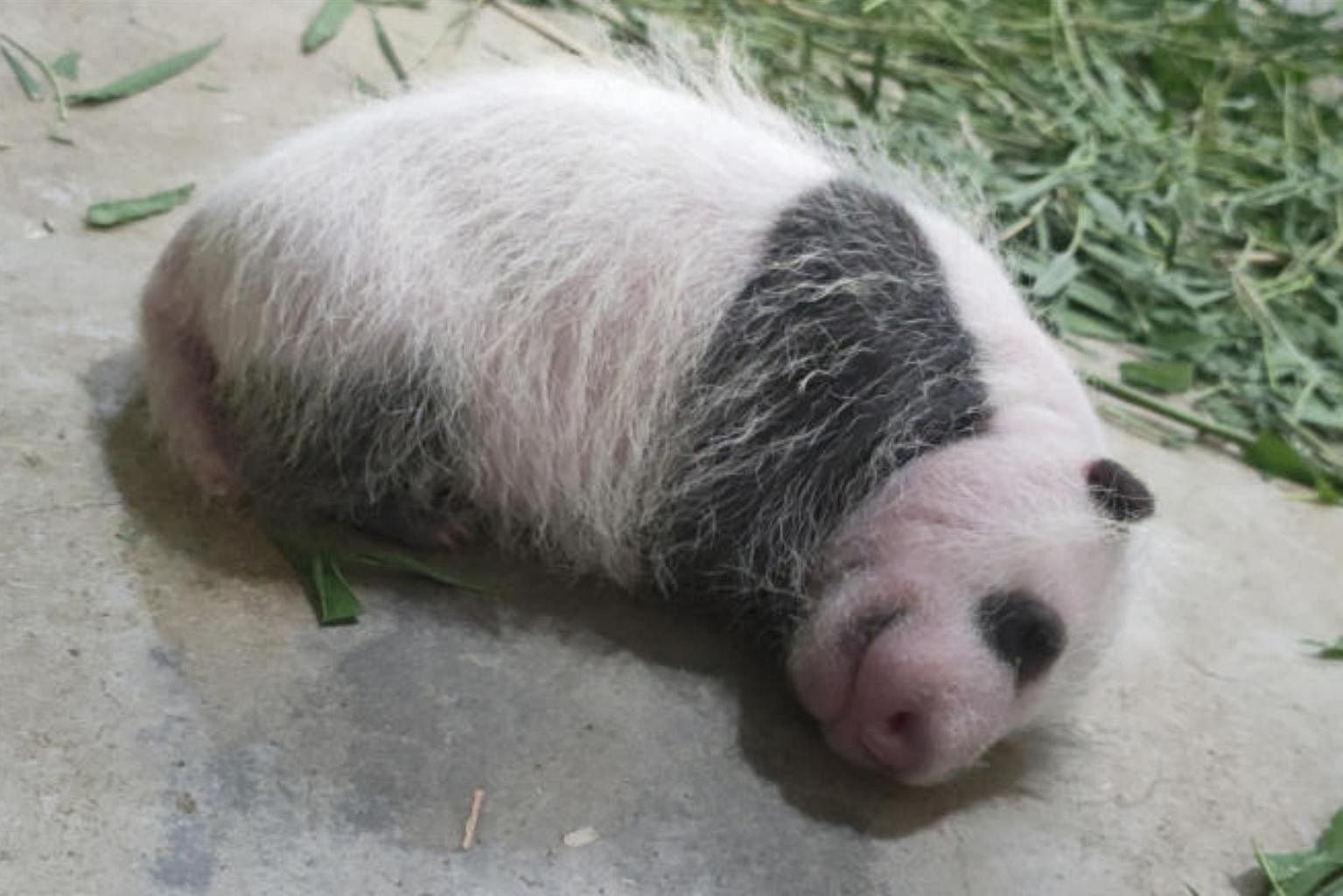
Day 33, Sept 15: The first weigh-in: The panda care team weighs the little one for the first time. At birth, he is an estimated 200g. Within a span of a month and three days, he gains 1.304kg — a whopping six-fold increase.
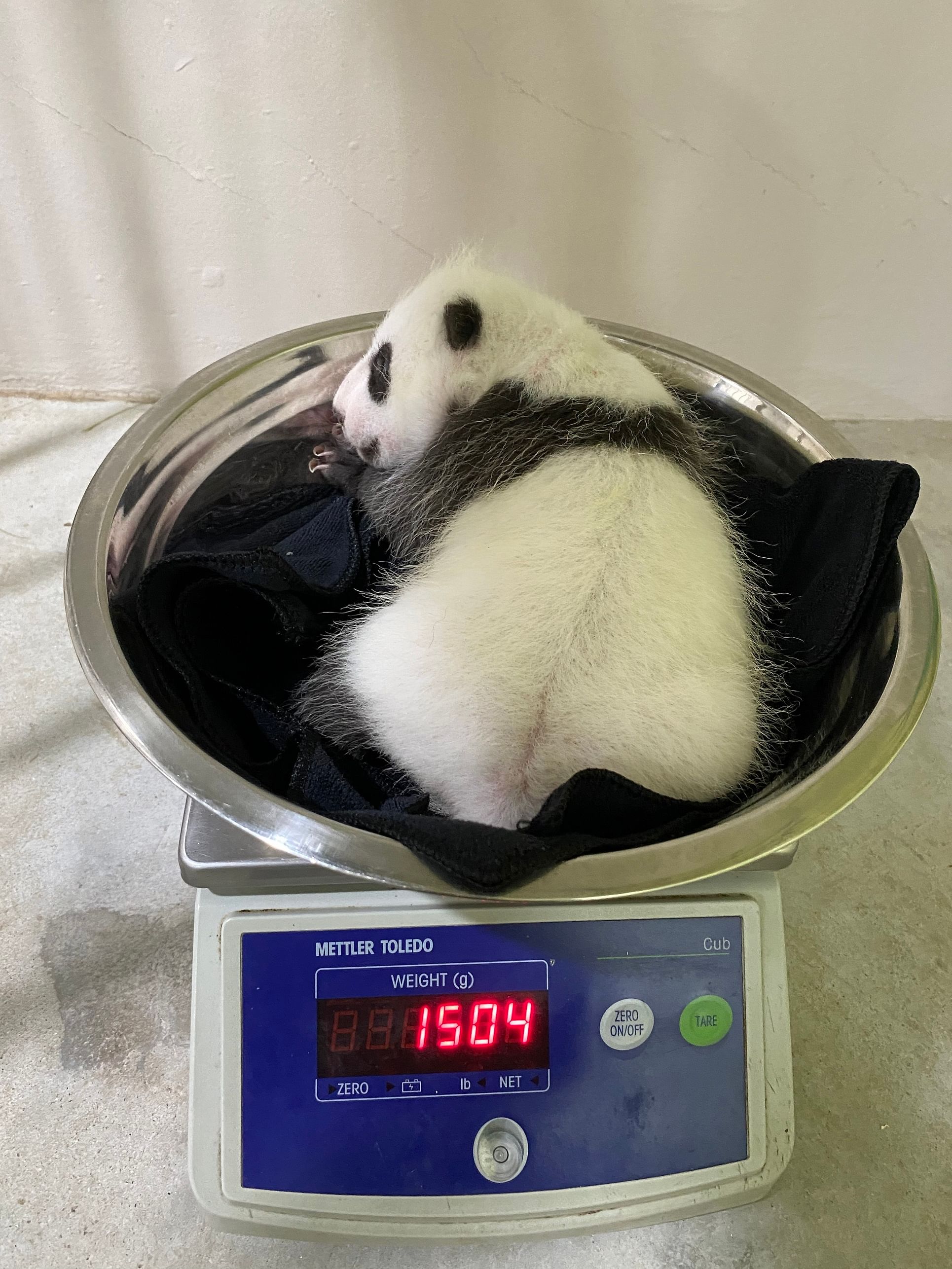
Day 38, Sept 20: The cub is starting to try to turn himself the right side up. He now has a formidable, albeit still tiny, set of claws.
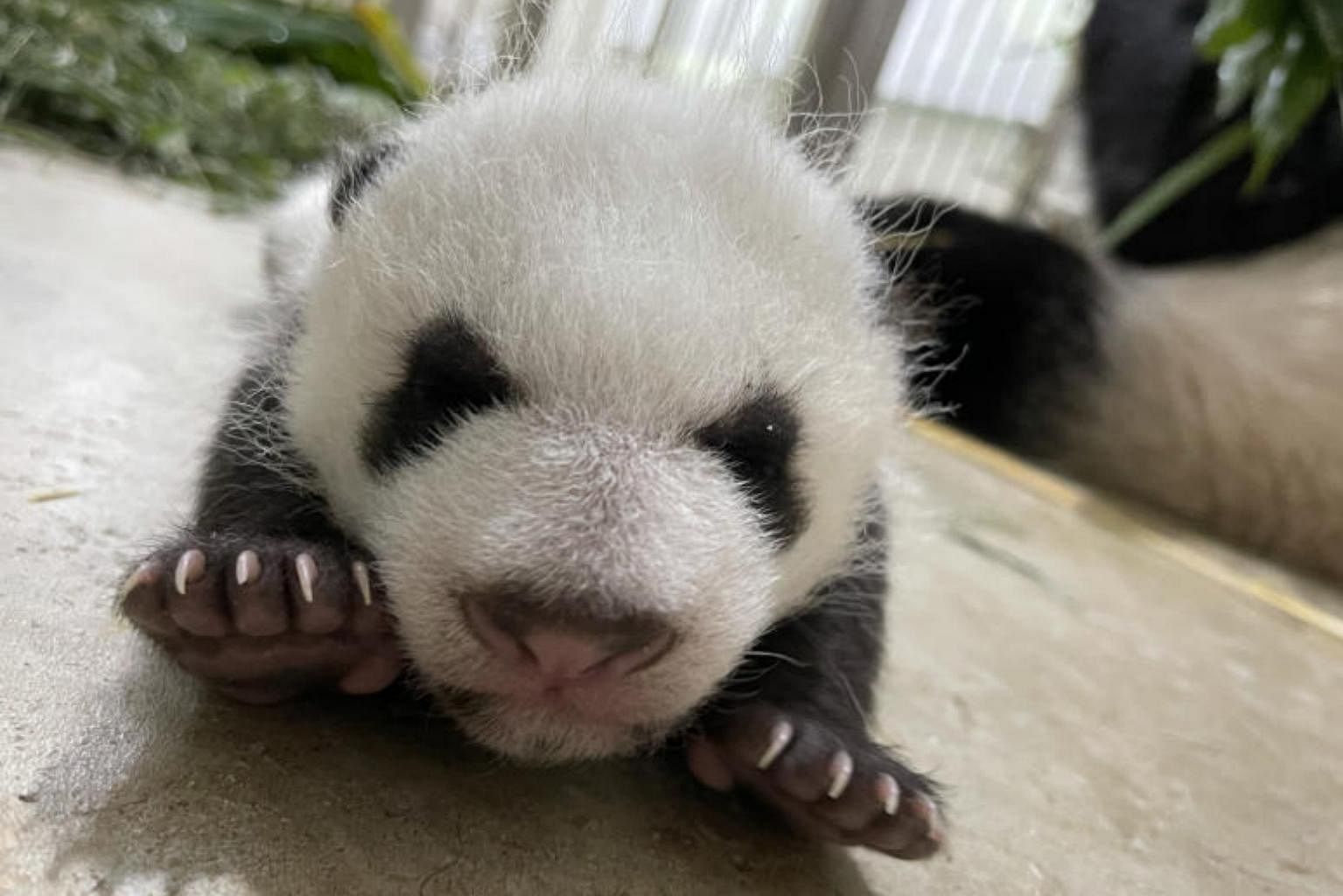
Day 47, Sept 29: The cub is transferred from the maternity den to the weighing scale in a new container to see how fast he is growing.
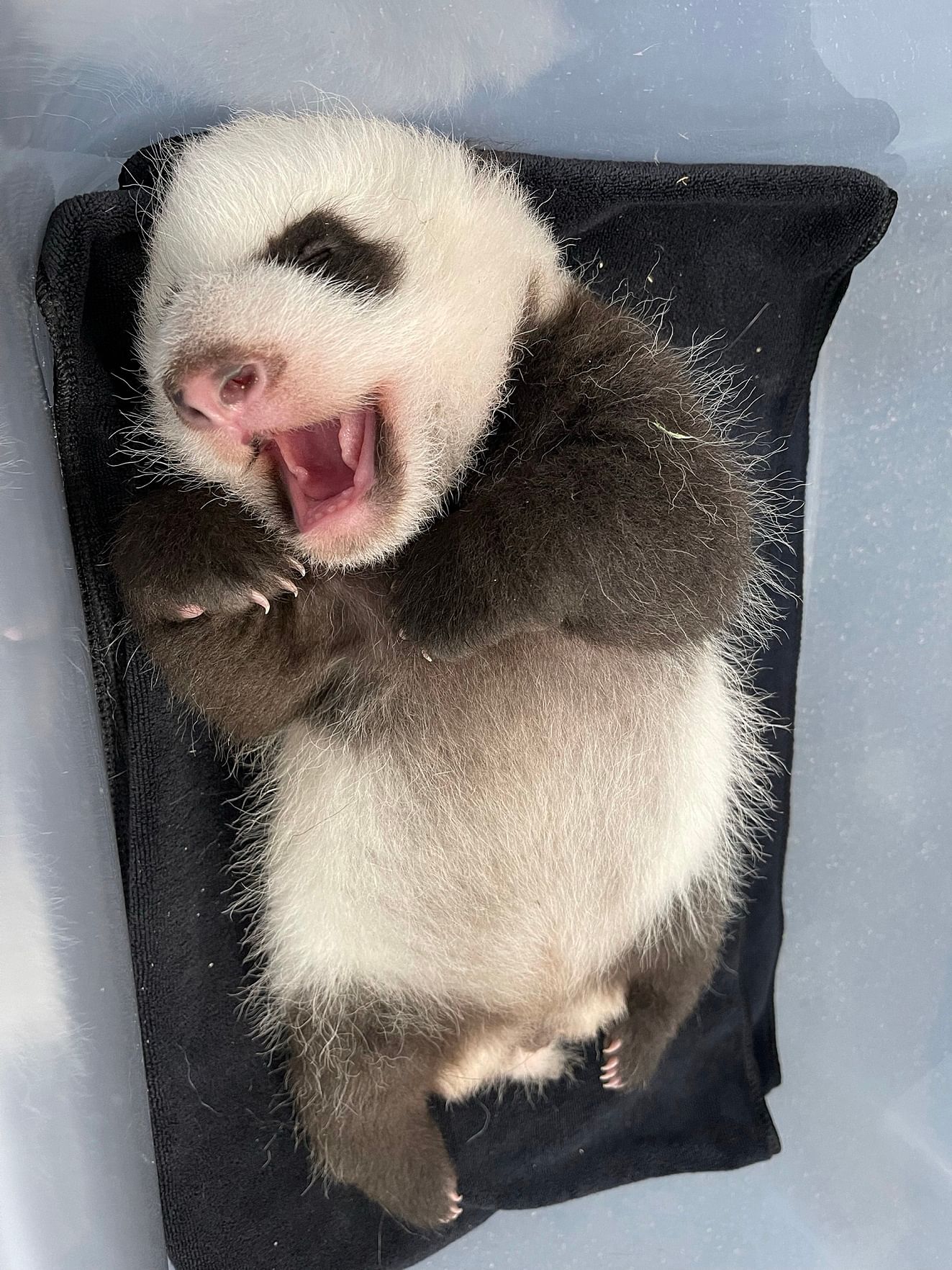
Day 52, Oct 4: Six incisor teeth are spotted on the lower gum line. Giant pandas have two sets of teeth in their lifetime. The first set of 24 teeth, known as deciduous teeth, usually develop at three months old. They begin to lose these teeth when they are about seven months old, replacing them with 42 permanent teeth by 18 months. These teeth are very strong and designed to crunch on bamboo.
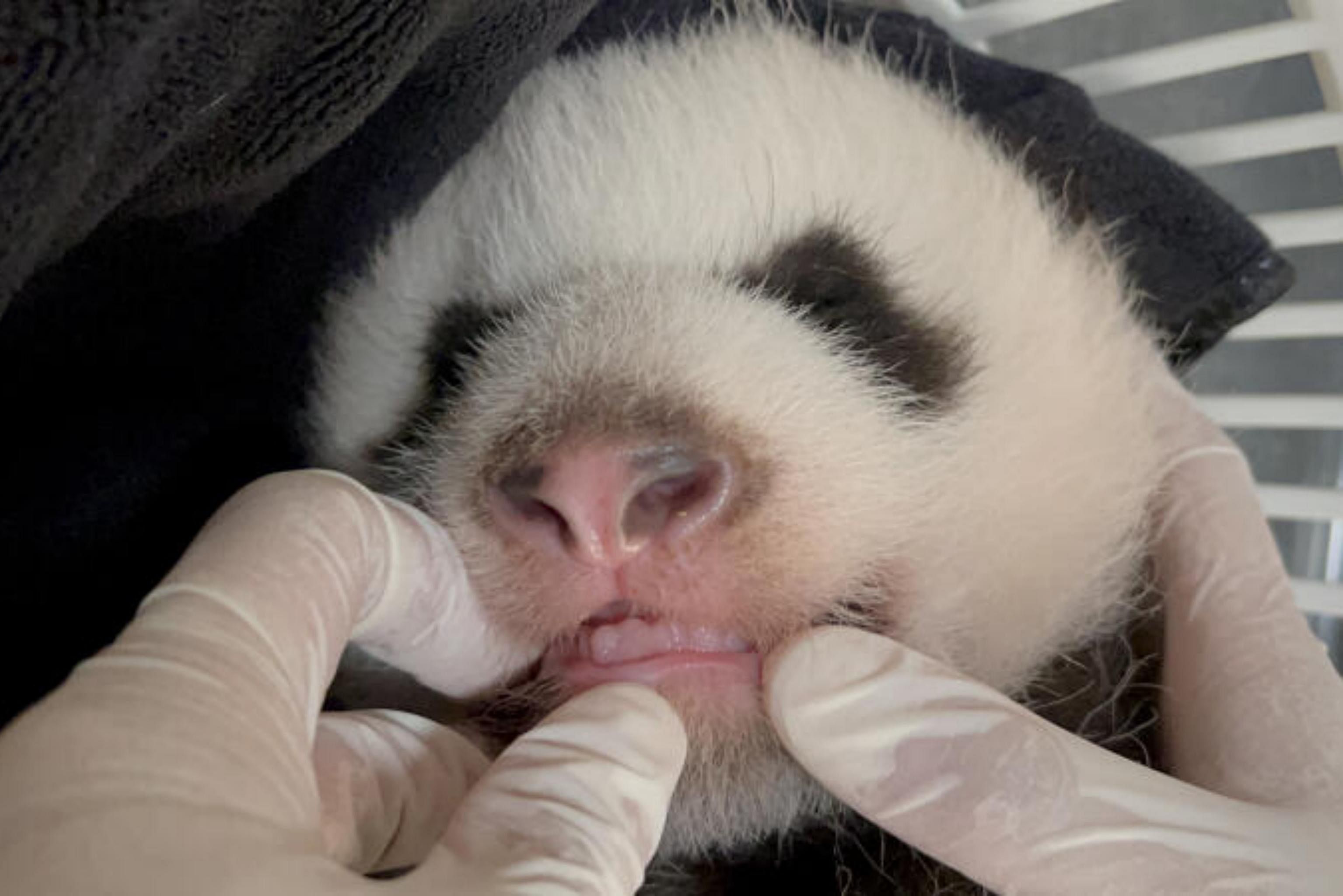
Day 54, Oct 6: The little one measures 51cm from head to tail. Taking measurements regularly allows the panda care team to chart the developmental growth of the cub to ensure healthy progress.
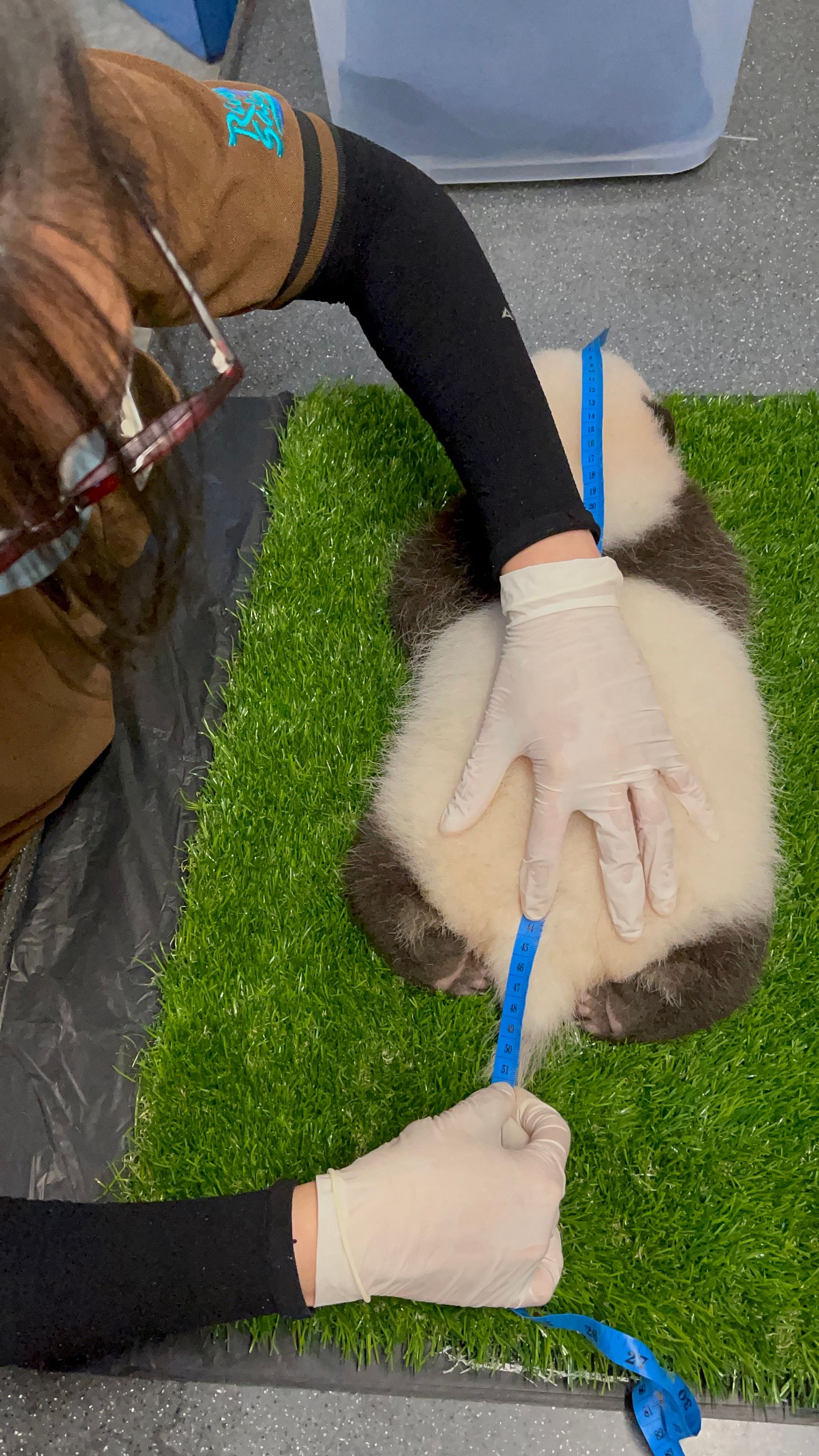
Day 60, Oct 12: Those paws and claws are at rest now, but they will soon help the cub climb trees when he becomes more mobile. Being able to climb a tree is an essential skill for wild pandas, so that they can get away from potential predators such as wild dogs. If they are not able to make it up a tree, they might get injured or killed.

Day 75, Oct 27: It looks like the cub is mastering the art of adorable poses. The chubby cheeks of giant pandas make them appear endearing, but belie their formidable strength. In fact, the bears can deliver one of the strongest bites in the animal kingdom. They use their strong cheek muscles and jaws to crack tough bamboo shoots.
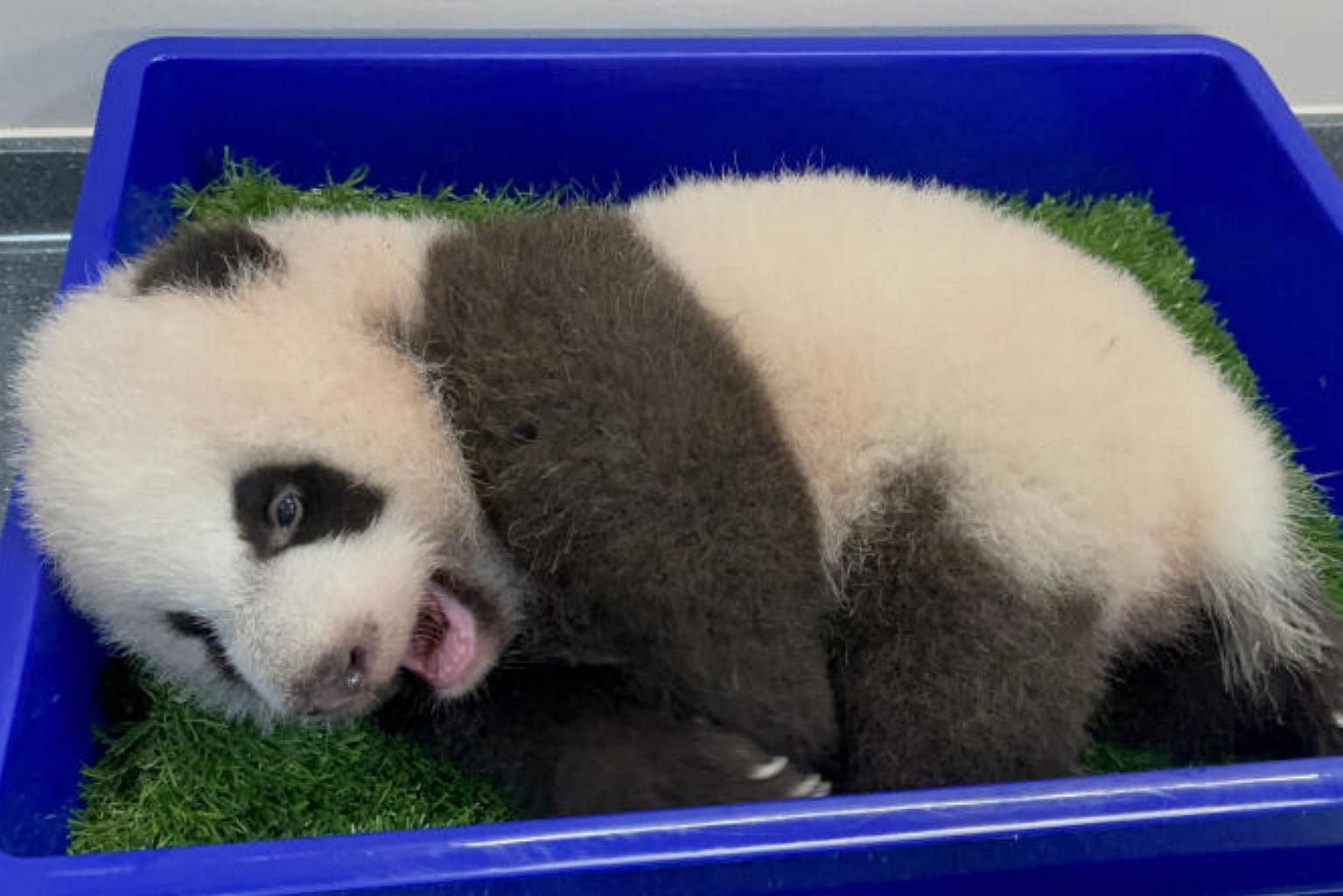
Day 78, Oct 30: Conditioning sessions are part of the daily routine. It looks like the cub is also listening intently to the instructions panda caregiver Trisha Tay is doling out to mum Jia Jia.
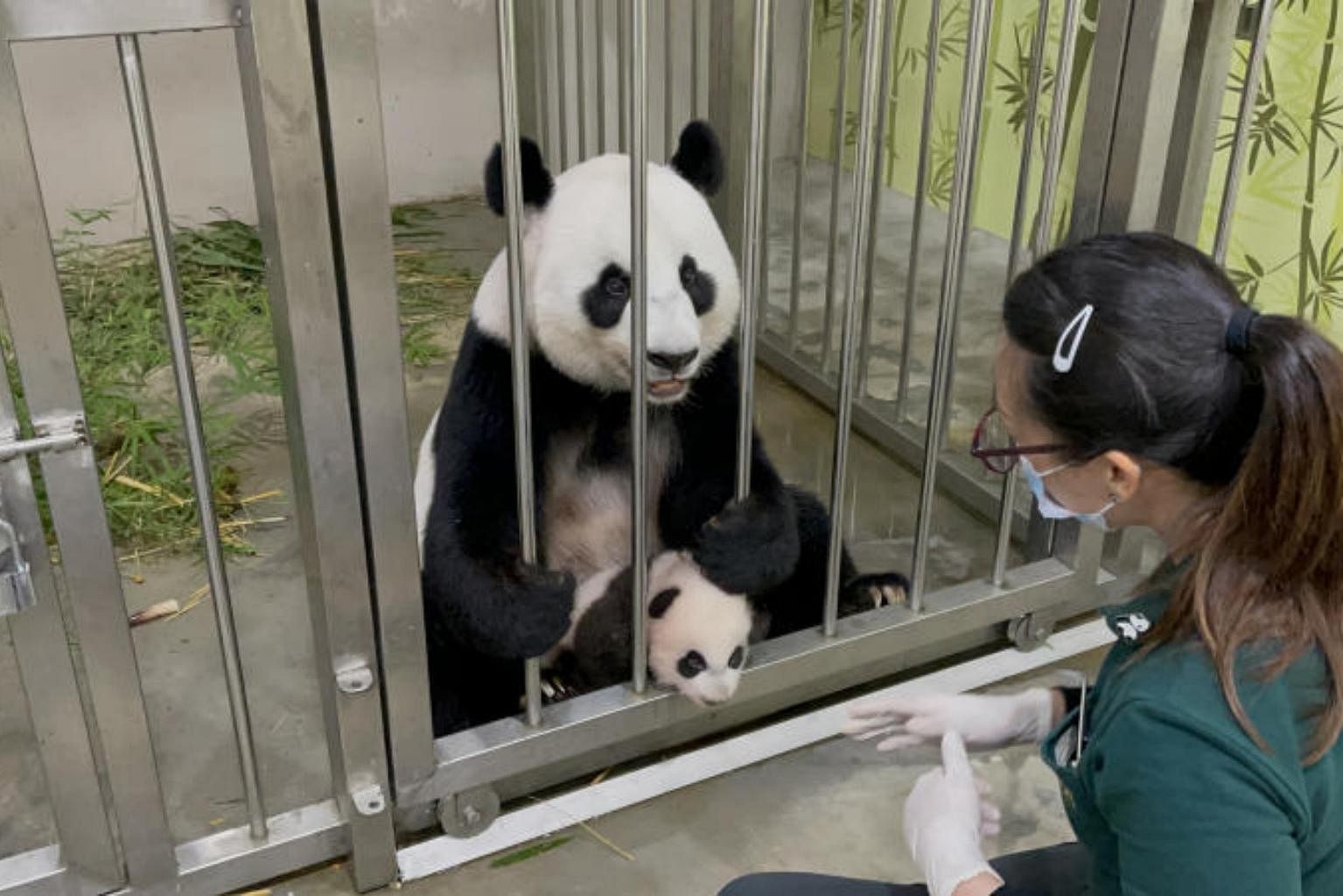
Day 82, Nov 3: The cub crosses the 5kg mark and graduates to a new weighing scale, having outgrown his first.
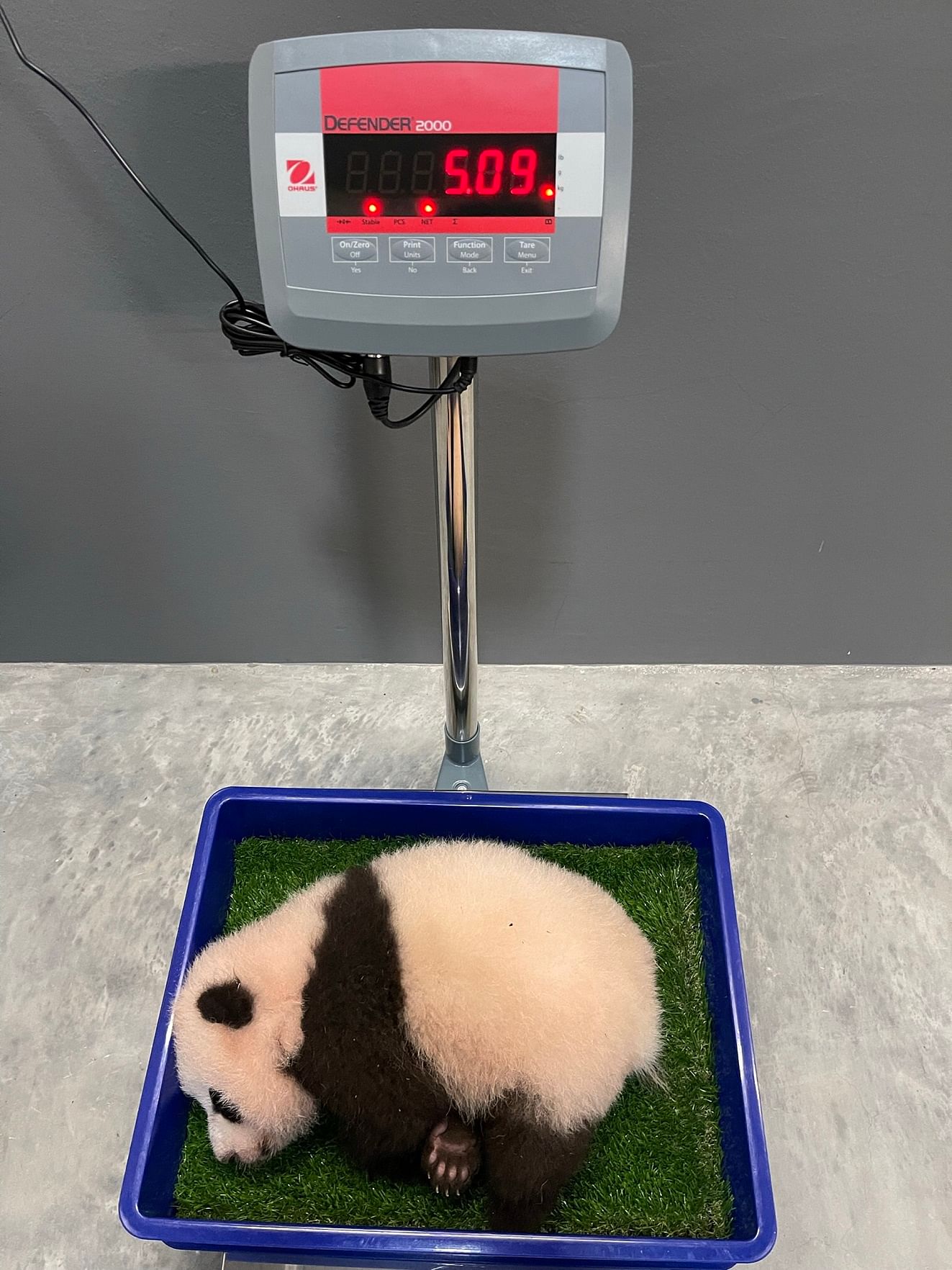
Day 84, Nov 5: The cub's canines start to push through the gum line.
Day 96, Nov 17: The cub weighs a little over 6kg, measures 67cm long, has a mouthful of baby teeth and is showing off his newfound crawl-walking skills.
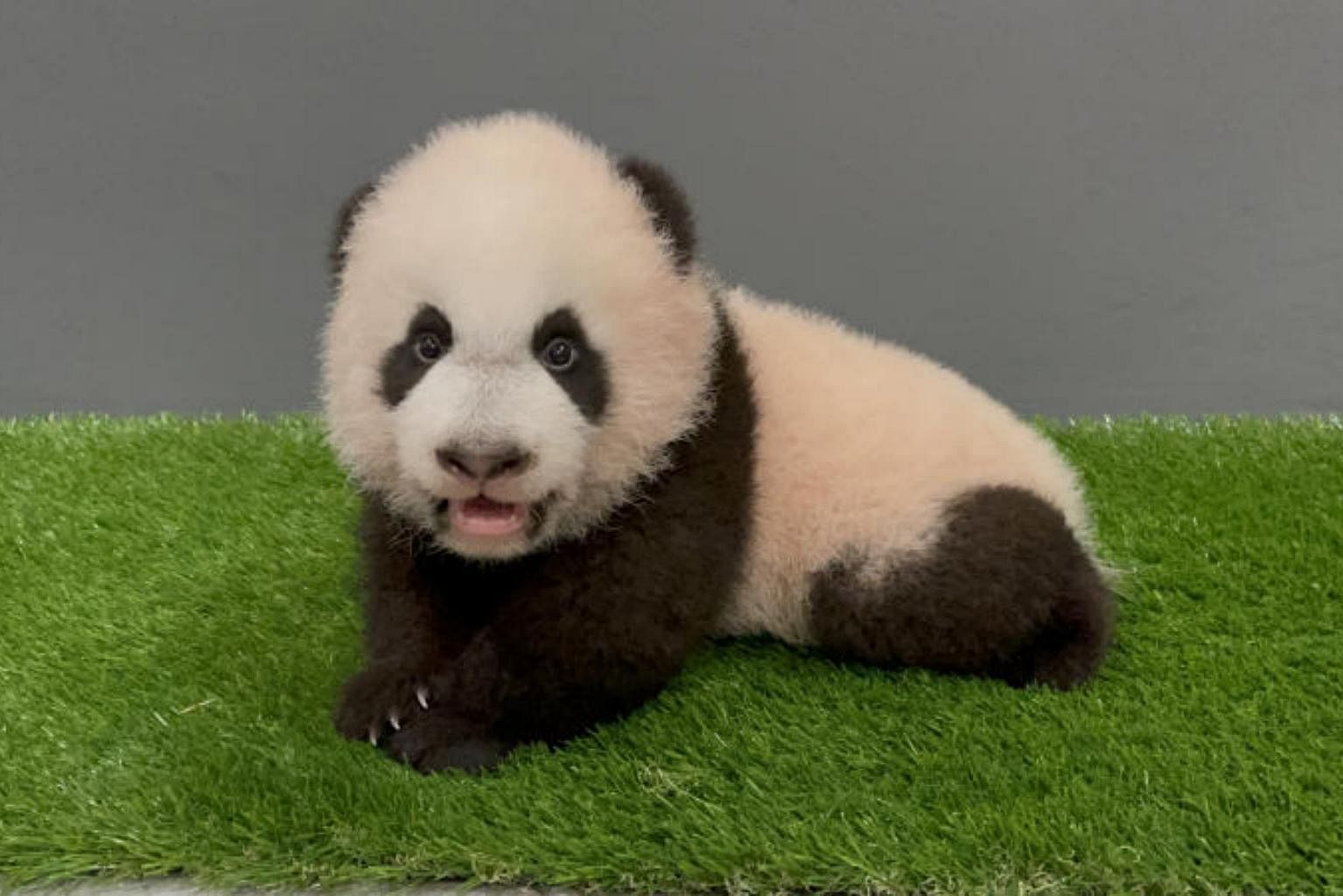
This article was first published in The Straits Times. Permission required for reproduction.